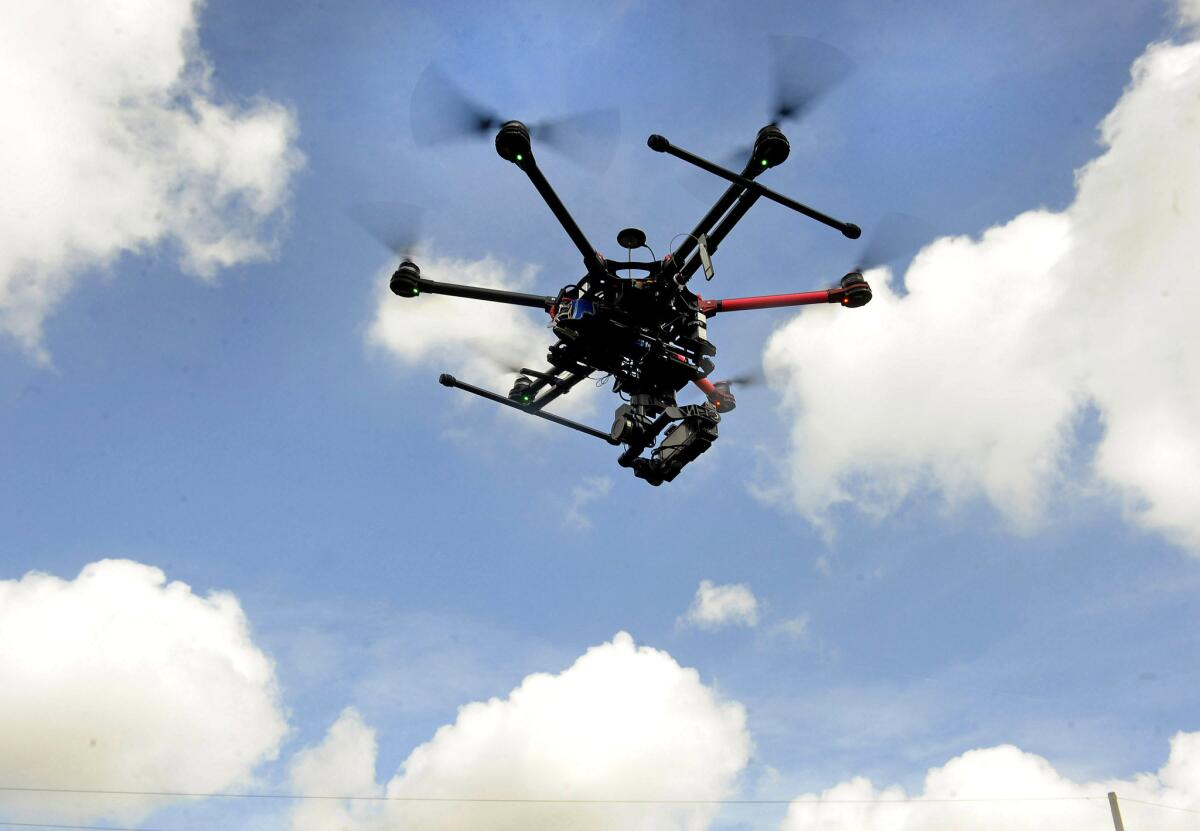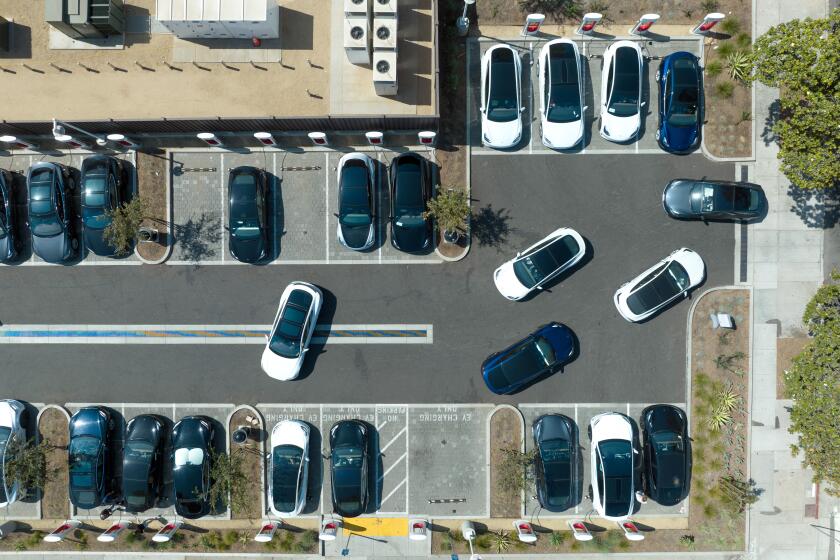Op-Ed: FAA should curb its regulatory authority over commercial drone use

For more than half a century, the Federal Aviation Administration has piloted the development of sensible aviation regulation in the United States. Unfortunately, when Congress enacted legislation in 2012 directing the FAA to craft rules for small civilian drones, the agency entered uncharted territory.
Civilian drones are fundamentally different from manned aircraft. Many small drones can be purchased online for just a few hundred dollars and are designed to hover relatively close to the ground, well below where conventional planes and helicopters fly.
The FAA is working on federal civilian drone regulations, but in the meantime, the agency has outlawed any commercial uses of drones without express FAA authorization. This ban applies to hundreds of types of flying devices that are not even capable of reaching the minimal safe altitude of manned airplanes. Several times this year, FAA officials have issued cease-and-desist notices against ordinary citizens for flying small commercial drones just a few dozen feet above land.
The FAA’s controversial crackdown on commercial drones drew attention last March when an administrative law judge for the National Transportation Safety Board ruled that the FAA lacked authority to fine a man $10,000 for using his drone to capture aerial footage of the University of Virginia for a promotional video. The judge hearing the case candidly pointed out that, under the FAA’s expansive view of its own regulatory power, even the flight of a paper airplane or a toy balsa wood glider would fall within FAA jurisdiction. Shockingly, an NTSB opinion issued this week reversed that decision and implied that the FAA did possess regulatory authority over the flights of unmanned objects, regardless of their size, all the way down the ground.
This new ruling is particularly troubling because the FAA still hasn’t found a federal regulatory scheme capable of effectively integrating drones into the nation’s airspace. A June audit report revealed that the agency was “significantly behind schedule” in meeting congressionally imposed deadlines for its development of civilian drone regulations. Frustrated at the FAA’s snail-like pace, companies such as Amazon and Google have begun exporting their drone research activities to other countries.
Small drones are not built for lengthy interstate flights at altitudes where conventional airplanes fly, so why should a federal agency be the chief regulator of these devices? Rather than seeking to expand its regulatory jurisdiction all the way down to the ground, the FAA should advocate for itself a more limited role in a collaborative federal, state and local regulatory scheme tailored to the unique attributes of drone technologies.
The FAA should be focused on those aspects of drone regulation that are most appropriately implemented at the federal government level. For instance, the agency could accelerate the development of national drone safety and performance standards analogous to the National Highway Traffic Safety Administration’s manufacturing standards for motor vehicles. Among other things, these FAA standards could require that all commercial drones incorporate specific global positioning system features to ensure compatibility with a nationally standardized geo-fence network designed to keep drones out of the way of conventional aircraft. At least one leading drone manufacturer is already using “geo-fence” software to prevent operators from flying their drones into the airspace surrounding hundreds of airports around the world.
Most other facets of civilian drone regulation are better suited for lower levels of government. Several state legislatures have already enacted drone-related statutes, but states should be doing much more. In addition to creating registration and licensing programs for commercial drones and their operators, legislatures could enact laws that clarify the scope of landowners’ rights to exclude drones from the airspace directly above their land. If tailored properly, these aerial trespass statutes could help to address a wide array of conflicts involving drones, including those involving law enforcement uses of drone devices.
Local governments are well-positioned to serve valuable functions in drone regulation as well. In particular, drone zoning laws adopted at the local level could permit wider use of drones in certain commercial or agricultural zones while imposing greater restrictions on drones above residential areas. Municipalities could even adopt temporary-use permit provisions to accommodate occasional drone use by real estate agents and wedding photographers without compromising landowner privacy. Regrettably, until the FAA signals that it does not intend to regulate these sorts of activities at the federal level, most local officials are unlikely to craft innovative drone policies within their communities.
The commercial drone industry is poised to take off in the United States, but it will largely remain grounded until the FAA embraces a narrower regulatory role and gets out of the way.
Troy A. Rule is a law professor at Arizona State University’s Sandra Day O’Connor College of Law.
Follow the Opinion section on Twitter @latimesopinion
More to Read
A cure for the common opinion
Get thought-provoking perspectives with our weekly newsletter.
You may occasionally receive promotional content from the Los Angeles Times.










